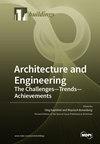关于应急物流管理中基于过境的疏散规划的系统性文献综述:优化和建模方法
IF 3.1
3区 工程技术
Q2 CONSTRUCTION & BUILDING TECHNOLOGY
引用次数: 0
摘要
近年来,灾害日益增多,因此有必要制定应急物流计划。疏散规划在应急物流管理中发挥着重要作用,尤其是在解决依赖过境运输的人群问题时,以往的研究往往忽视了这一点。本系统性文献综述探讨了基于过境的疏散规划的现状,并研究了目前存在的差距。我们重点研究了使用优化和建模方法的过境疏散规划问题。本综述对相关研究进行了广泛分析,以提供全面概述,找出研究差距,并勾勒出疏散规划知识体系的未来方向。本综述采用综合系统综述方法,对 Scopus 和 Web of Science 数据库进行了全面检索,共检索到 538 篇文章。根据预先确定的纳入和排除标准对这些文章进行了筛选和评估,最终得出了 82 项研究供最终分析。研究结果凸显了优化和建模方法在基于公交的疏散规划中日益增长的重要性。研究强调将公共交通网络纳入疏散战略,以提高运营效率、优化资源分配并确保疏散人员的安全。基于公共交通的疏散规划对没有私人车辆的人和车主都至关重要,前者可以使疏散更加公平,后者则尤其适用于车辆可能无法进入或被困的地震情况,这表明其在所有紧急情况下都具有广泛的实用性。在基于公交的疏散规划研究中采用了各种优化和建模方法,以模拟和分析紧急情况下疏散人员和车辆的流动情况。基于交通的疏散规划在灾害管理中表现出独特的特点,包括考虑交通系统的时空动态、社会和人口因素的整合以及多方利益相关者的参与。空间和时间动态包括运输时间表、容量和路线,而社会和人口因素则涉及收入、年龄和流动状况等变量。利益相关者的参与有利于合作决策和有效的计划制定。然而,基于公交的疏散规划面临着挑战,需要进一步研究和开发。数据的可用性和准确性、模型验证、利益相关者的协调以及不确定性和动态因素的整合都构成了重大障碍。要应对这些挑战,就必须在数据收集、强大的建模框架以及改善利益相关者之间的沟通和协调机制方面取得进展。解决这些差距需要跨学科合作以及数据分析和建模技术的进步。本文章由计算机程序翻译,如有差异,请以英文原文为准。
A Systematic Literature Review on Transit-Based Evacuation Planning in Emergency Logistics Management: Optimisation and Modelling Approaches
Increasing disasters in recent years have necessitated the development of emergency logistics plans. Evacuation planning plays an important role in emergency logistics management, particularly when it comes to addressing transit-dependent populations that are often neglected in previous studies. This systematic literature review explores the current state of transit-based evacuation planning and examines the current gaps. We focused on transit-based evacuation planning problems that used optimisation and modelling approaches. This review conducts an extensive analysis of relevant studies to provide a comprehensive overview, identify research gaps, and outline future directions in the evacuation planning body of knowledge. Using an integrated systematic review methodology, a thorough search of the Scopus and Web of Science databases was conducted, resulting in a total of 538 articles. These articles were screened and evaluated based on predetermined inclusion and exclusion criteria, ultimately yielding 82 studies for final analysis. The findings highlight the growing importance of optimisation and modelling approaches within transit-based evacuation planning. Studies emphasize the integration of public transportation networks into evacuation strategies to enhance operational efficiency, optimize resource allocation, and ensure evacuee safety. Transit-based evacuation planning is vital for both those without personal vehicles, making evacuation more equitable, and vehicle owners, particularly in earthquakes where vehicles might be inaccessible or trapped, demonstrating its wide usefulness in all emergency scenarios. Various optimisation and modelling approaches have been employed in transit-based evacuation planning studies to simulate and analyse the flow of evacuees and vehicles during emergencies. Transit-based evacuation planning exhibits unique characteristics within disaster management, including the consideration of spatial and temporal dynamics of transit systems, integration of social and demographic factors, and involvement of multiple stakeholders. Spatial and temporal dynamics encompass transportation schedules, capacities, and routes, while social and demographic factors involve variables such as income, age, and mobility status. Stakeholder engagement facilitates collaborative decision-making and effective plan development. However, transit-based evacuation planning faces challenges that require further research and development. Data availability and accuracy, model validation, stakeholder coordination, and the integration of uncertainty and dynamic factors pose significant hurdles. Addressing these challenges necessitates advances in data collection, robust modelling frameworks, and improved communication and coordination mechanisms among stakeholders. Addressing these gaps requires interdisciplinary collaborations and advances in data analytics and modelling techniques.
求助全文
通过发布文献求助,成功后即可免费获取论文全文。
去求助
来源期刊

Buildings
Multiple-
CiteScore
3.40
自引率
26.30%
发文量
1883
审稿时长
11 weeks
期刊介绍:
BUILDINGS content is primarily staff-written and submitted information is evaluated by the editors for its value to the audience. Such information may be used in articles with appropriate attribution to the source. The editorial staff considers information on the following topics: -Issues directed at building owners and facility managers in North America -Issues relevant to existing buildings, including retrofits, maintenance and modernization -Solution-based content, such as tips and tricks -New construction but only with an eye to issues involving maintenance and operation We generally do not review the following topics because these are not relevant to our readers: -Information on the residential market with the exception of multifamily buildings -International news unrelated to the North American market -Real estate market updates or construction updates
 求助内容:
求助内容: 应助结果提醒方式:
应助结果提醒方式:


